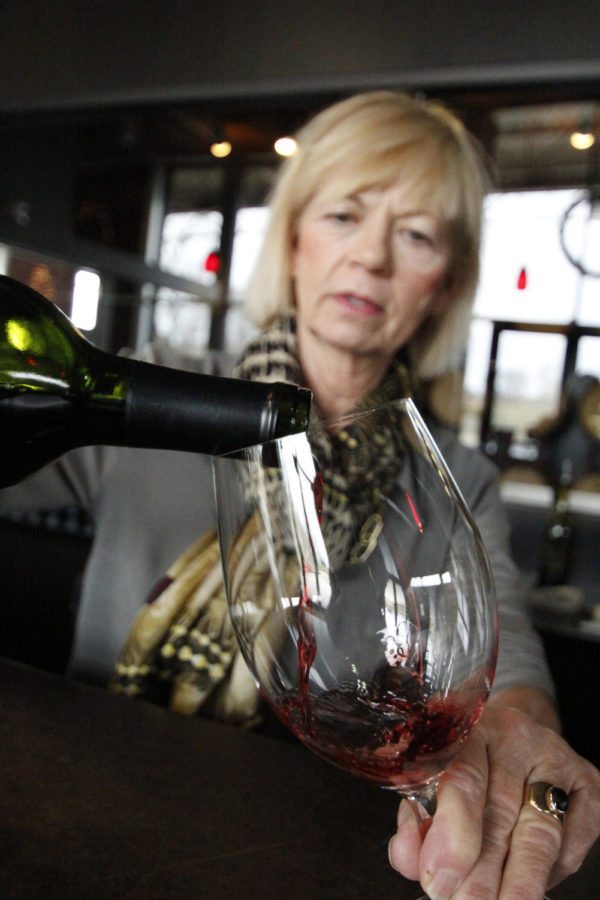Shape, color, size of glasses all affect amount of wine poured
Jonathan Krueger/Iowa State Daily
Jean Groben, of Jasper Winery, pours wine into a glass. A standard glass ofwine is 5 to 6 ounces. A study by faculty from Iowa State and Cornell revealed that participants poured more wine when holding the glass than when not.
October 10, 2013
Researchers found that size, shape and color of a wine glass affects how much wine someone pours.
Doug Walker and Laura Smarandescu, respectively professor and assistant professor of marketing at Iowa State, and Brian Wansink, professor of marketing at Cornell University, took a closer look at how environmental factors affect the amount of wine people pour into a glass.
While researching a phenomenon Wansink labels “mindless eating,” he came up with an idea to test the tendencies of people pouring wine.
The professors looked at six different environmental factors that are normal to most situations when pouring wine. Some of the factors included the shape of the wine glass and color or contrast of the color to the glass.
“Each participant would come in to their food brand, food lab there at Cornell, and there were various stations set up through the lab, and they would go to them and they would be asked to pour what they considered a serving,” Walker said.
Every station was different. Some had different sized glasses or different place settings, and the participants were not allowed to drink. Participants were asked to pour the same amount at each station.
The researchers found that on average, participants would pour 3.95 fluid ounces in to their standard base line glass. When the glass was wider, the participants poured 11.9 percent more wine. Due to the contrast with the glass, white wine caused participants to pour 9.2 percent more. When the glass was in the participants’ hands, they poured 12.2 percent more wine.
“The participants were of drinking age but were in their 20s,” Walker said.
Walker said the age of the participants makes it relevant to ISU students
“I don’t believe that students are aware of how much they are drinking,” Mariana Carter, sophomore in microbiology. “I think a lot are wrapped in the stigma of drinking in college, so they don’t necessarily keep tabs on how much they drink.”
Walker said wine is not the only form of alcohol the study can be applied to. Glasses can be deceptive when pouring beer and liquor, too.
Walker says the results of the study should give ISU students pause before they fill their next glass.







